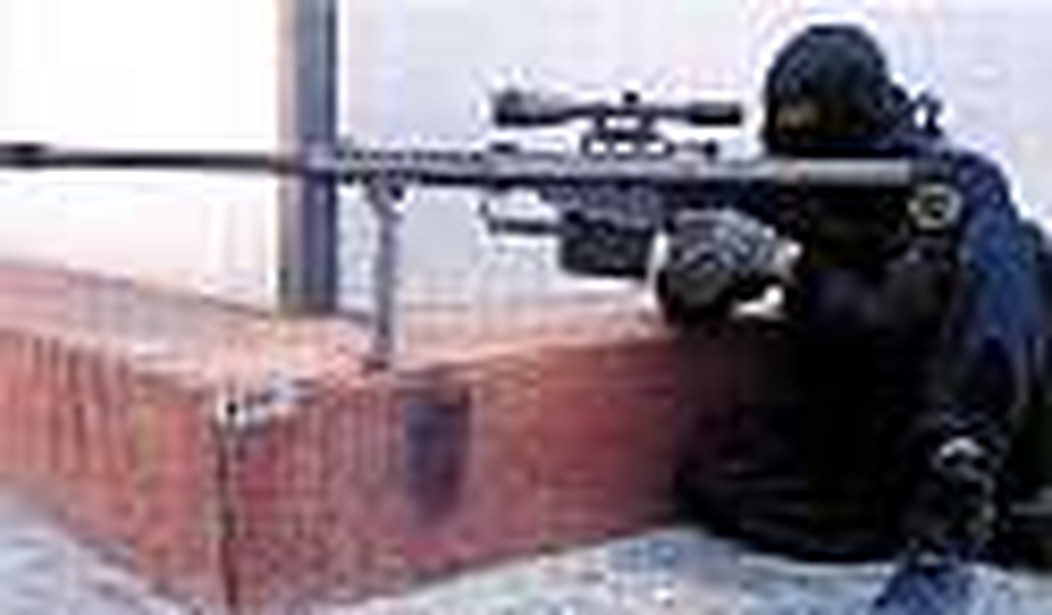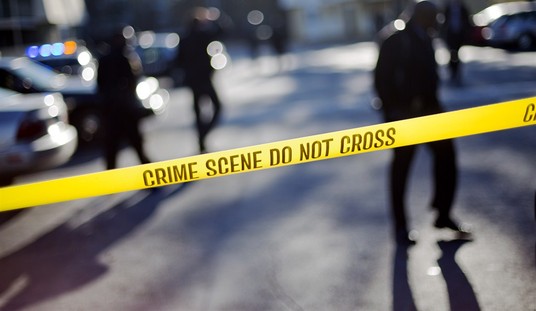THE COUNTERTERROR FIGHT
The first article in this two part series, How to Run a Terror Organization suggested nine dynamic, inter-related elements or “factors” that sought to answer the question “What does it take to create and run an international terrorist movement?”
Writing for Pajamas makes it easy to review those nine factors in depth, but here’s the list:
1- Grievance
2- Ethnic or Sectarian Antagonisms
3- A Recruitment Base
4- Crime
5- Money
6 -Training Facilities
7-Communications
8- Media
9- “The Terrorists Tool Kit” (Materiel)
Now take the list in reverse order from Materiel (weapons, explosives, etc, found in the Istanbul tool kit) and track back to Grievance. Reverse order generally reflects “easiest to hardest” factors for a counter-terror organization to combat.
A strategically effective counter-terror war, however, is not a sequential fight (eg, get their killers’ weapons then move to “Media”). Stopping terrorists requires waging multi-dimensional, synergistic warfare, so in some manner each of the factors must be engaged simultaneously.
Counter-terror organizations try to limit the terrorists’ access to the weapons and the materials in the tool kit. This is a complex mission, but it certainly entails monitoring legal and illegal arms markets. It also means placing special emphasis on keeping nuclear and chemical weapons (super explosives) out of the hands of terrorists.
The Counter-terror fighter must also combat terrorists via the Media, destroy or deny Training Facilities (which could include attacking nations that harbor terrorists), and monitor and attack terrorist Communications. Fighting an effective counter-terror war requires squeezing and denying terrorists Money (financial support); monitoring, using, or eliminating criminal activities that aid and support terrorists (Crime); shrinking and perhaps co-opting terrorists’ Recruitment Base, and mitigating or resolving exacerbating Ethnic and Sectarian Antagonisms. The counter-terror fighter must address the terrorists’ claimed Grievances or expose the alleged Grievances as a political tool used by a self-interested, corrupt terrorist leadership cadre.
In the broadest sense, the Media battle includes political and ideological confrontation. In the case of al-Qaeda, “turning” former pro-terror clerics and putting them on Arabic language television or on the Internet is a multi-pronged political and ideological operation that addresses Grievance and Sectarian Antagonism – and could well shrink or co-opt the Recruitment base.
In March 2002 the British government said that it would begin “a new chapter” in its military policy. The British military conducted a study which emphasized the need to address five key goals, which reflect the key factors in the counter-terror fight:
1. Prevent conditions under which international terrorists can operate. When necessary, this could include helping “less capable states” to develop counter-terrorist capabilities.
2. Deter any potential attacker.
3. Coerce regimes that harbor or support terrorists to change their policy.
4. Disrupt terrorist networks by hampering or stopping their ability to move people, money, and weapons between countries.
5. Destroy terrorist groups by direct military action
The United States instituted a similar policy. The US also began looking for “long term solutions” the problems posed by al-Qaeda-type terrorism. One solution was “armed nation building,” which in the case of Afghanistan and Iraq commenced on a very ad hoc basis.
The creation of US African Command (AFRICOM), the US military command for Africa (less Egypt, Sudan, Djibouti, Somalia, and Kenya) exemplified another route to “long term solutions.” AFRICOM is a military command tasked with supporting a variety of security assistance and developmental aid programs. AFRICOM is a political statement by the US that it learned something from 9-11 and intends to be involved in the “chaotic corners” international terrorists have used as bases (eg, Afghanistan). In the best of outcomes for the US, AFRICOM’s “development and security strategy” would help impoverished nations avoid chaos. This is an incremental strategy for countering the terror factors of Ethnic and Sectarian Antagonisms and Grievance-but they are difficult problems. The model is already in place, Central Command’s Coalition Joint Task Force- Horn of Africa (CJTF-HOA). CJTF-HOA also conducts electronic intelligence gathering operations and deploys small numbers of special operations troops to track regional Al Qaeda activity.
The US and its allies are paying particular attention to attacking al-Qaeda’s finances (Money). The “counter-terror finance operations” are usually quite complex and they require a deep veil of secrecy. However, strangling terrorist finances is key to stopping large-scale, coordinated terrorist strikes. The counter-terrorist finance intelligence operation involving the Belgium-based consortium the Society for Worldwide Interbank Financial Telecommunication (SWIFT) is an example. That operation gleaned information which helped nab Jemaah Islamiya terrorist kingpin Hambali, the architect of the 2002 Bali (Indonesia) terror massacre. The SWIFT program was a meticulously constructed multinational covert operation that had the cooperation of Belgium, Spain and other European nations. It was an example of successful “counter-terror inside diplomacy” to organize the operation and ensure its legality. Unfortunately, the SWIFT program was exposed by the New York Times in June 2006 — which is why everyone now knows about it.
The US invasion of Afghanistan is an example of strategic direct action against terrorist organizations (the fifth goal outlined in Britain’s March 2002 analysis). This is a classic example of destroying a terrorist organization’s training facilities. The US-led invasion of Iraq is another example of strategic direct action but a more complicated example; the US believes the “long term” solution for al-Qaeda-type Islamist terrorism is Muslim Arab democracy. The counter-piracy missions conducted by the US Navy and allied navies in the Red Sea, Persian Gulf, waters off Somalia, Indian Ocean, and off the southern Philippines is another type of direct action – an “operational-level” example of direct action. The Turkish Istanbul Counterterrorism Department’s raid that captured our sample “tool kit” detailed in this series’ premier article is an example of police-type or special forces-type direct action – “tactical-level” direct action. A US “Predator” unmanned aerial vehicle (UAV) launching a Hellfire missiles that destroys a vehicle containing al-Qaeda operatives is another example of “tactical direct action.”
The first line of defense against terrorism, however, remains intelligence – accurate and timely intelligence. The best sources of quality intelligence are found in the places the terrorists inhabit. In the 1970s America began losing the capability to place agents in the hard corners of the planet, the dictatorships, failed states, and tribal areas al-Qaeda used as training bases and recruitment centers.
There were two reasons. The first was the hi-tech information revolution. Space satellites became increasingly sophisticated. These high flying spies could take pictures, use radar and scoop up electronic transmissions. Other electronic surveillance capabilities (some based on the ground, others on aircraft) also improved. The second reason was the risk to human agents. Sending human spies into enemy streets is a messy business. Agents get caught, and often killed. America decided to substitute hi-tech for HUMINT (human intelligence agents).
However, spy satellites may take excellent overhead pictures of people on the street but they do a very poor job of recording whispered conversations and they do not penetrate minds.
Fighting the Global War On Terror requires human spies who can talk the talk, and walk the walk, of the foe they are seeking. And yes, Americans do walk differently, as do people from every culture. If you want to really know what is going on in, say, Egypt, you need people there who can talk and walk like an Egyptian.
Since 9-11 counter-terrorism forces have put more agents into al-Qaeda organizations, and tapped into the Internet communications network that keeps al-Qaeda uses. The first is a slow process; the second is a fast process of digital cat and mouse involving cracking encrypted codes (the counter terrorist cat) and employing new codes (the terrorist mouse).
As diligent at the police are, they are playing the odds here. All it takes is a few lucky breaks for some passably competent terrorist wannabes, and you have another attack as occurred in Britain (2005) and Spain (2004). Over a dozen similar attacks have been stopped by good police work. But as terrorists like to say, they only have to get lucky once.
(NOTE: These articles are drawn from Chapter One of the new edition of A Quick and Dirty Guide to War (Paladin Press, 2008), by James F. Dunnigan and Austin Bay. Jim and I turned in the manuscript three weeks ago. Jim is editor of www.strategypage.com. I’d also like to call attention to “Consequences: A Rapid Military Withdrawal From Iraq,” a new television/internet-video pilot program produced by TheArenaUSA, featured on their beta-portal, austinbay.thearenausa.com )
Austin Bay is an author and syndicated columnist. His online writings can be found here.









Join the conversation as a VIP Member